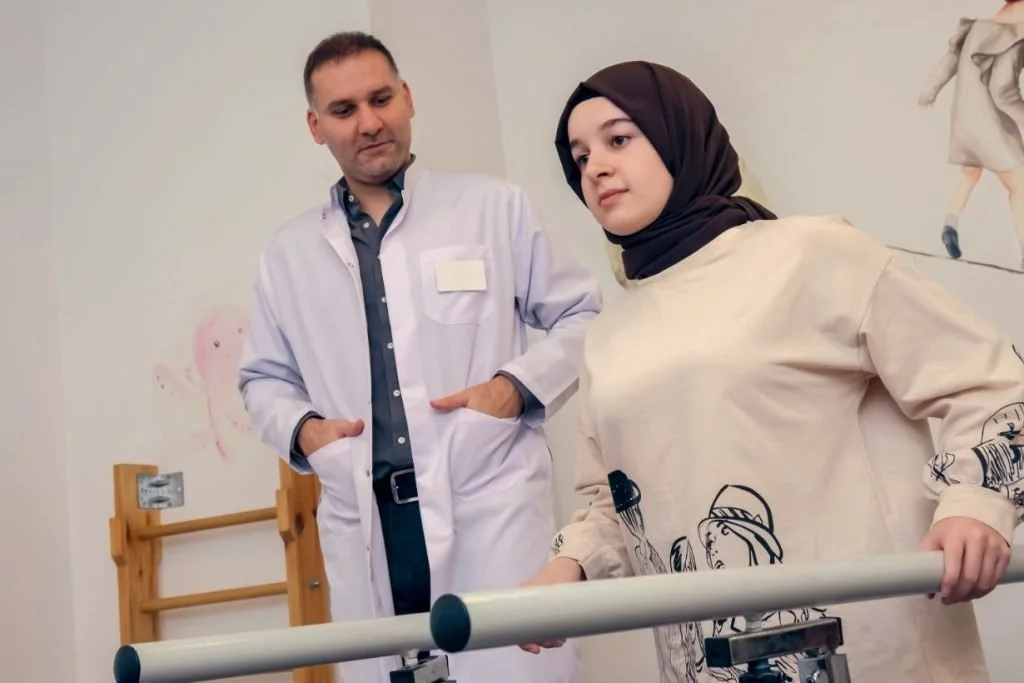Are Physiotherapists Doctors?
Are physiotherapists doctors, and how does their role differ across healthcare systems? Exploring the qualifications, legal status, and scope of practice of physiotherapists in Australia and India reveals significant insights into this allied health profession. Examining regulatory frameworks, professional titles, and common misconceptions explains physiotherapy and its crucial role in patient care. Comparing these two countries highlights how cultural and legal distinctions shape the practice of physiotherapy, offering valuable perspectives on this essential healthcare field.
Doctor & Physio: Definitions
Doctor
Medical doctor: A licensed healthcare professional
Completed medical school
Qualified to diagnose and treat illnesses, injuries, and health conditions
Typically holds an MBBS degree or MD in modern scientific medicine
Registered with the appropriate medical board in their country
Physiotherapist
Physiotherapy (physical therapy) is a healthcare profession focused on restoring and maintaining physical function, mobility, and well-being.
Physiotherapists are expert allied health practitioners specializing in movement and function.
They treat various conditions affecting the musculoskeletal, neurological, and cardiorespiratory systems.
Techniques used by physiotherapists include exercise, manual therapy, and education.
Their goal is to help patients recover from injury, manage chronic conditions, and prevent future health problems.
While both play crucial roles in the medical field, their scopes of practice, education, and legal status vary between countries, as seen in Australia and India.
Physiotherapists in Australia
Physiotherapists in Australia are highly trained allied health professionals who play a vital role in the country’s healthcare system. Strict regulations and standards govern their practice to ensure high-quality patient care.
Qualifications and Education:
4-year Bachelor’s degree in Physiotherapy or
2-3 year Master’s/Doctor of Physiotherapy (following any bachelor’s)
Programs include extensive clinical placements and courses
Accredited by the Australian Physiotherapy Council
Legal Status and Registration:
Must register with the Physiotherapy Board of Australia (overseen by AHPRA)
Annual registration renewal required
20 hours of continuing professional development annually
Must maintain professional indemnity insurance
Physiotherapists are not permitted to practice medicine or prescribe drugs independently
Scope of Practice:
Assess, diagnose, and treat movement-related disorders
Develop and implement treatment plans
Provide manual therapy, exercise programs, and patient education
Use various therapeutic modalities (e.g., ultrasound, electrotherapy)
Role in Healthcare:
Primary care providers for musculoskeletal issues
Work in hospitals, private practices, sports teams, and community health
Collaborate with general practitioners and other healthcare professionals
Contribute to injury prevention and health promotion
Use of “Dr” Title:
Permitted for those with doctoral degrees (e.g., PhD, DPT)
Must clarify their role (e.g., “Dr. Smith, Physiotherapist”)
Cannot imply medical practitioner status
Subject to Board guidelines on the appropriate use
The Australian College of Physiotherapists recognises the professional achievements of its Fellows, who are granted the right to use the title ‘Doctor’.
The comprehensive education, rigorous registration requirements, and broad scope of practice enable Australian physiotherapists to provide expert care in various healthcare settings, making them integral to the nation’s health and well-being.
Physiotherapists in India
Physiotherapy is a recognised healthcare profession in India, but its regulatory framework and legal status differ from other countries.
Legal Status and Recognition:
Recognised as allied health professionals
Not considered medical practitioners under the Indian Medical Council Act
Can practice independently but with limitations compared to medical doctors
Regulatory Framework:
Governed by the Rehabilitation Council of India (RCI) Act, 1994, also known as the India Act
RCI maintains the Central Rehabilitation Register
Only qualified individuals registered with RCI can practice physiotherapy
The RCI Act prohibits physiotherapists from practising medicine and prescribing drugs without the proper qualifications
Aims to standardise training and maintain professional standards
However, physiotherapy regulation in India is less comprehensive compared to the regulation of the allopathic systems of medicine
Use of “Dr” Title:
Supreme Court’s verdict prohibits physiotherapists from using ‘Dr’ title
Physiotherapists are prohibited from claiming the title of ‘specialist medical practitioner’ or using the prefix ‘Dr’ in prescriptions
Only registered medical practitioners can use the ‘Doctor’ prefix
Physiotherapists must use their professional designation without ‘Dr’
Aims to prevent misleading the public about qualifications
Despite these limitations, physiotherapists in India play a crucial role in healthcare, particularly in rehabilitation and movement disorders. However, the profession continues to advocate for more comprehensive recognition and expanded practice rights.
Comparison between Australia and India
Similarities:
Physiotherapists in both countries are recognised healthcare professionals
Focus on physical rehabilitation and movement disorders
Require specific education and training in physiotherapy
Play important roles in healthcare systems
Differences:
Legal Status:
Australia: Autonomous practitioners with a broad scope of practice
India: Recognised but with more limited legal status and practice rights
Regulatory Framework:
Australia: Comprehensive regulation by Physiotherapy Board and AHPRA
India: Oversight by Rehabilitation Council of India, less comprehensive regulation
Use of “Dr” Title:
Australia: Permitted for those with doctoral degrees, with clear identification
India: Prohibited by Supreme Court ruling for all physiotherapists
Education:
Australia: Standardised university programs with clinical placements
India: Varied programs working towards standardisation
Scope of Practice:
Australia: Can be primary care providers, broader diagnostic rights
India: More limited scope, often working under physician oversight
Cultural Distinctions:
Public Perception and Acceptance
Australia: Greater public understanding and acceptance of physiotherapy as primary care
India: Growing recognition, but often seen as supplementary to medical treatment
Direct Access to Physiotherapy
Australia: More established direct access to physiotherapy services
India: Increasing but still limited direct access, often requiring physician referral
These differences reflect varying healthcare systems, legal frameworks, and cultural perceptions of physiotherapy in the two countries, influencing the profession’s practice and development.
Common Misconceptions
There are several misconceptions about the role and status of physiotherapists in healthcare. Let’s address some of the most common ones:
Belief that all healthcare providers are “doctors”:
Not all healthcare providers hold a medical doctorate
“Doctor” often refers specifically to medical practitioners (MBBS or MD)
Some physiotherapists may have a doctorate (e.g., DPT or PhD) but are not medical doctors
Some physiotherapists adopt the title ‘Doctor’ immediately upon completion of their undergraduate degree (Note: This is incorrect and misleading)
Misunderstanding of physiotherapists’ role:
Physiotherapists are highly trained professionals, but not medical doctors
They provide direct patient care and can be primary care providers for certain conditions
Physiotherapists have extensive knowledge of the human body and movement disorders
They can diagnose and treat certain conditions independently
Confusion about “allied health professionals”:
Allied health includes various healthcare professions distinct from medicine and nursing
Physiotherapists are part of the allied health category
Other examples include occupational therapists, speech pathologists, and dietitians
Allied health professionals complement medical care but have distinct roles
Reasons for confusion with medical doctors:
The autonomous nature of physiotherapy practice can be similar to that of doctors
Some physiotherapists with doctorates may use the title “Dr.” (with clarification)
Physiotherapists’ ability to provide primary care in some settings
Understanding these distinctions helps patients navigate the healthcare system more effectively and appreciate the unique expertise that physiotherapists bring to their care.
When to See a Physiotherapist VS a Medical Doctor
Understanding when to consult each professional ensures you receive appropriate care for your condition.
1. Conditions for Physiotherapists
Musculoskeletal issues (e.g., back pain, arthritis)
Sports injuries
Post-surgery rehabilitation
Balance and mobility problems
Chronic pain management
Certain neurological and respiratory conditions
2. Reasons to See a Medical Doctor
Severe or sudden onset of pain
Suspected fractures or dislocations
Unexplained weight loss or fever with pain
Numbness or tingling in limbs
Suspected internal organ issues
Need for medication or diagnostic tests
3. Collaborative Care Scenarios
Post-surgical rehabilitation
Management of chronic conditions
Complex cases involving multiple systems
Sports medicine
Occupational health programs
Physiotherapists and doctors often work together, referring patients to each other when necessary for comprehensive care.
Patient Benefits of Physiotherapy
Physiotherapy offers unique advantages for those with movement-related issues or recovering from injuries.
1. Expertise in Movement and Rehabilitation
Comprehensive assessment of movement patterns
Identification and treatment of biomechanical issues
Tailored exercise programs for specific conditions
2. Non-Invasive Treatment Options
Lower risk compared to surgery
Fewer side effects than medications
Empowers patients through active participation
3. Key Techniques Used by Allied Health Professionals:
Manual therapy
Therapeutic exercises
Electrotherapy modalities
Education in posture and body mechanics
4. Outcomes:
Improved mobility and function
Effective pain management
Injury prevention through education
Long-term health improvements
These methods help achieve long-term health improvements while minimising risks associated with more aggressive interventions.
Conclusion
While not medical doctors, physiotherapists are vital healthcare professionals specialising in physical rehabilitation and movement. Their roles, rights, and recognition vary between countries like Australia and India, reflecting different healthcare systems and cultural contexts. Despite these differences, physiotherapists significantly contribute to patient care, offering expertise in non-invasive treatments and collaborative healthcare approaches.
Frequently Asked Questions
Are physiotherapists considered doctors in Australia?
No, physiotherapists are not medical doctors.
Some may have a doctoral degree (e.g., Doctor of Physiotherapy), but this doesn’t equate to being a medical doctor. The title ‘Dr’ is typically associated with completing a research degree, such as a PhD or Clinical Doctorate.
Can physiotherapists prescribe drugs?
Generally, no. Physiotherapists in Australia cannot prescribe medication. They focus on non-pharmacological treatments.
Do I need a referral to see a physiotherapist?
No, you can see a physiotherapist without a doctor’s referral. However, a referral may be required for certain insurance claims or Medicare benefits.
What's the difference between a physiotherapist and an exercise physiologist?
Physiotherapists focus on injury treatment and rehabilitation. Exercise physiologists specialise in exercise interventions for chronic conditions.
Can physiotherapists perform diagnostic tests?
They can perform physical assessments and some diagnostic tests. They refer to specialist medical practitioners for advanced imaging (e.g., X-rays, MRIs).
Who can use the title 'doctor' in Australia?
Medical practitioners with an MBBS or MD degree. Professionals with doctoral degrees (e.g., PhD) in their field, including some physiotherapists. Chiropractors can use ‘Dr’ but must clarify they are not medical practitioners.
Do physiotherapists have a specific title?
In Australia, registered physiotherapists use the protected title ‘Physiotherapist’. Those with additional qualifications may be referred to as ‘Titled Physiotherapists’. Physiotherapists with doctoral degrees may use ‘Dr’ with appropriate clarification.
Do physiotherapists specialise in specific areas?
Yes, they can specialise in areas like sports physiotherapy, pediatrics, or neurology. Specialisation often requires additional training and certification.
Can physiotherapists work in hospitals?
Yes, many physiotherapists work in hospitals as part of multidisciplinary healthcare teams.
Can physiotherapists diagnose conditions?
They can diagnose musculoskeletal conditions within their scope of practice.
For complex or systemic conditions, they work with doctors for comprehensive diagnosis.




